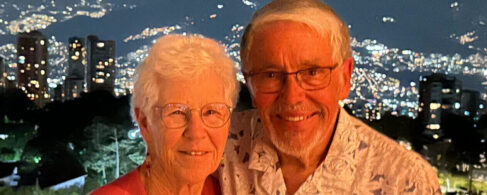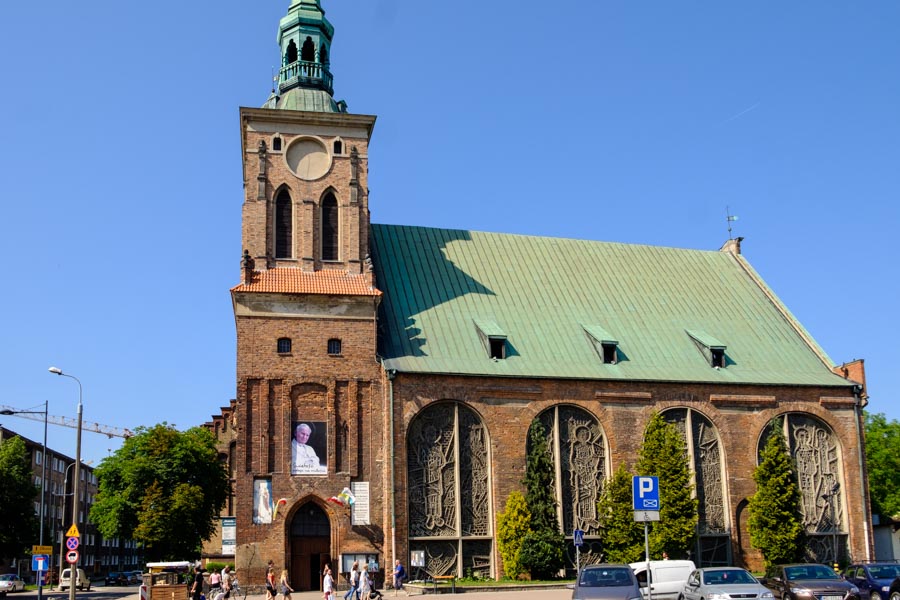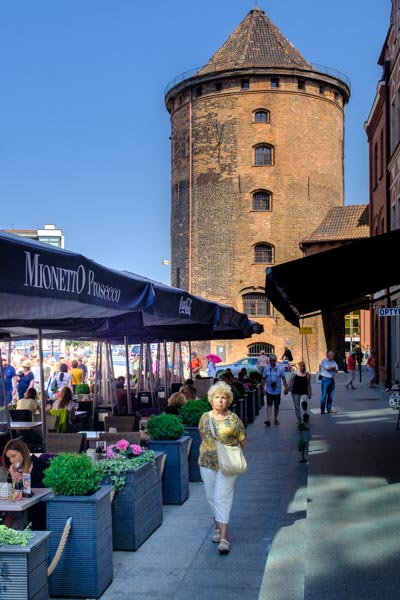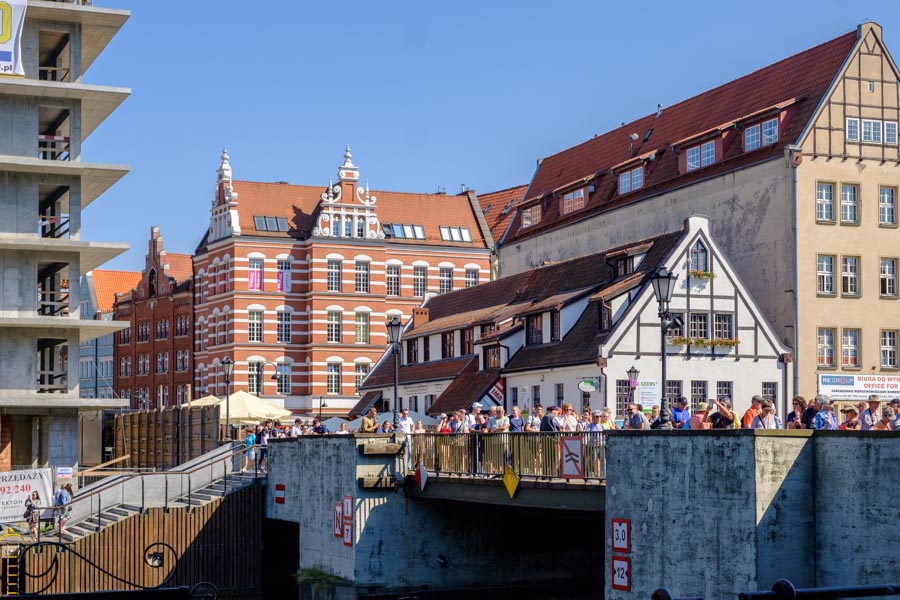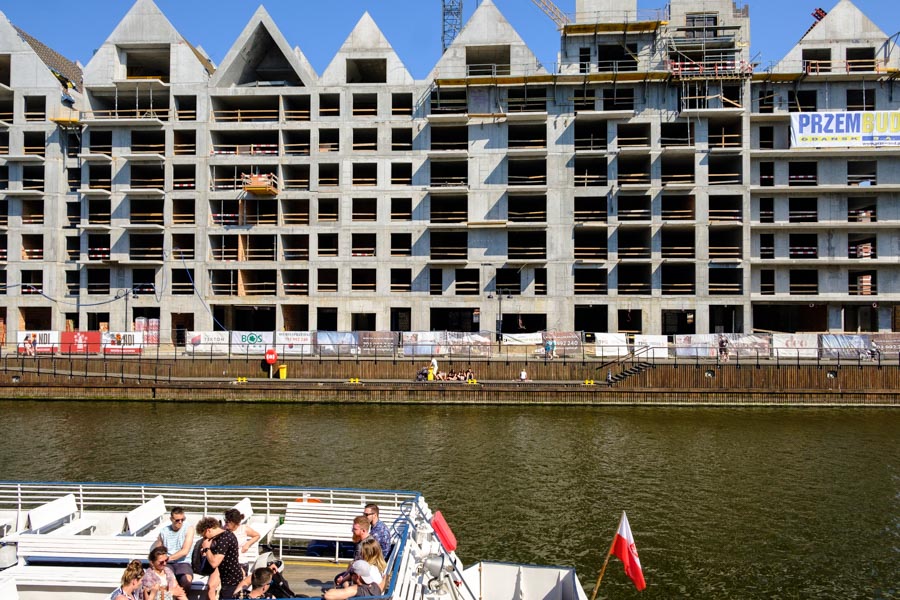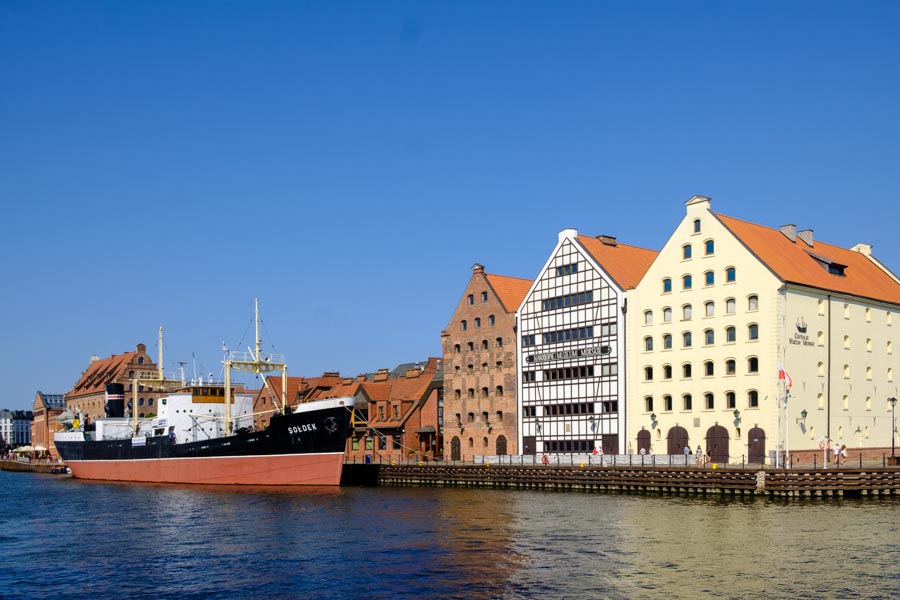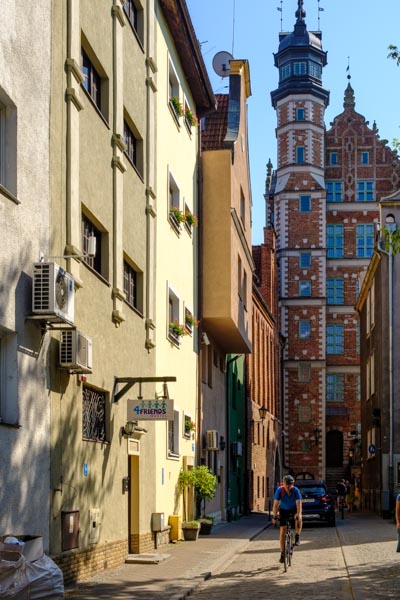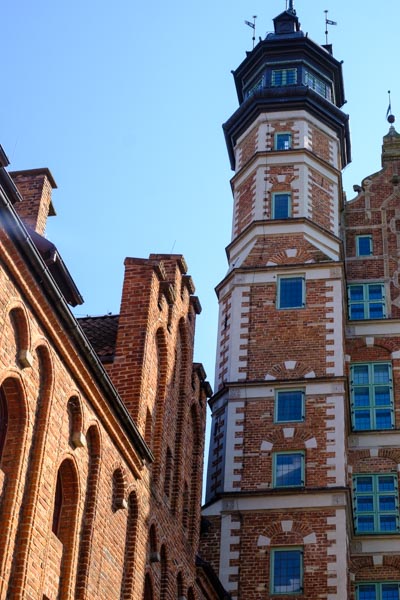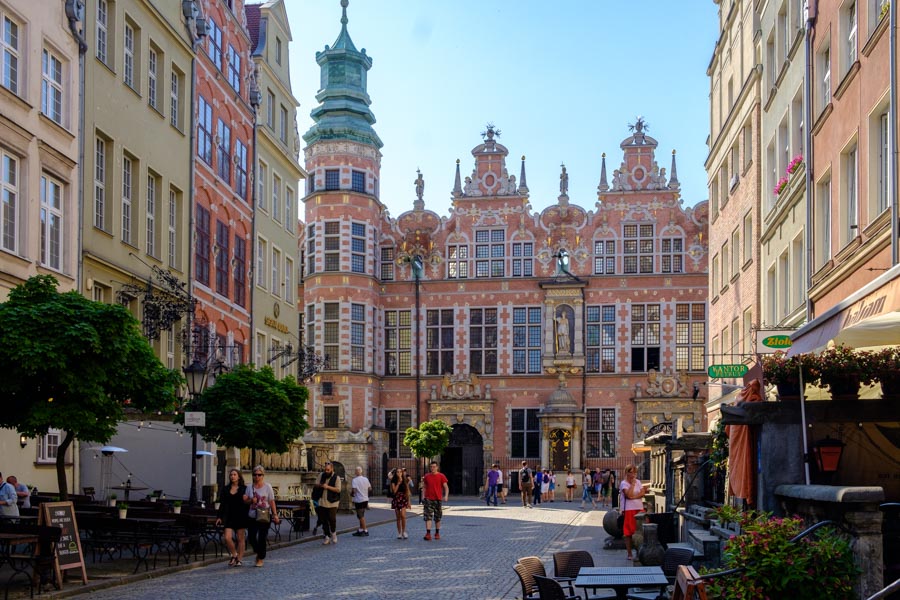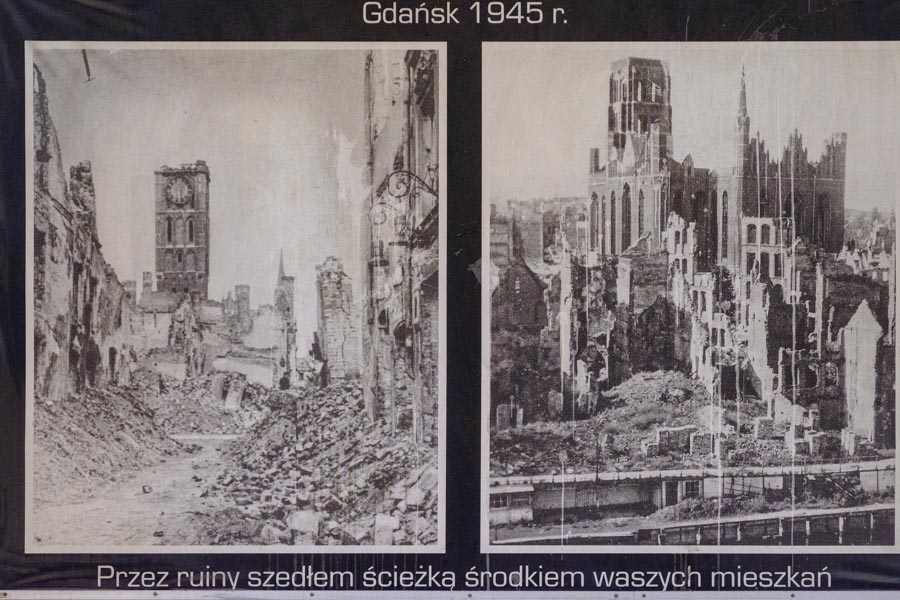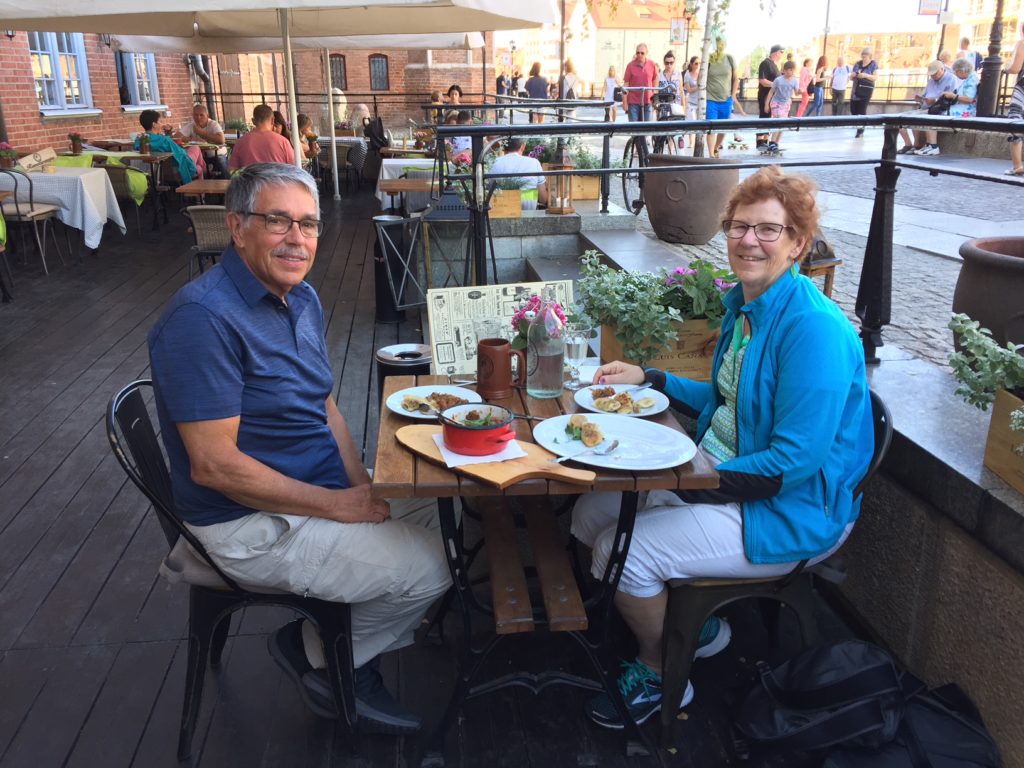Our friend Hala from Florida gave us a restaurant recommendation here in Gdansk. It’s right in the heart of Gdansk’s Old Town so was easy to find. And what a recommendation it turned out to be. Our twenty something waitress diplomatically suppressed her eye roll when I said, “We don’t know much about Polish food. What would you recommend.” Based on her expert advice we had two different soups that both featured really fine mushrooms, pierogis stuffed with mushrooms and cabbage and some sort of meat stew. I asked our very patient waitress, “What kind of meat is in this stew?” “Oh a little bit of everything – ribs, beef, veal, pork – whatever we have on hand.” And of course it had the usual cabbage, mushrooms and onions. Being on a cultural appreciation tour we of course had to sample the dessert menu: apple pie with ice cream (more like an apple layer cake) and some pastry stuffed with apples, swimming in a raspberry sauce. Top that off with a Polish beer and you’ve got one fine dinner, all for about $58 including a generous tip.
Today was, indeed, Gdansk, Poland day. My going-into image of Gdansk was of some dreary port town, lots of cranes and shipping containers, gray and dingy. Wrong. It’s an amazing, happening kind of place. The old town was swimming in all sorts of people: lots of foreign tourists, of course, including our 600+ Viking contingent. But lots were Polish folks out enjoying the bright, warm Saturday afternoon. Lots of families with kids in evidence. Corpus Christi day was Thursday so lots of Polish people are stretching it into a four-day weekend.
Of course Gdansk, like many European towns, was bombed to smithereens during World War II and suffered destruction during the Soviet occupation. Only one Catholic Church was spared from the Soviets; the priest spoke fluent Russian and convinced the Orthodox Russians that they really shouldn’t destroy his church.
Over 90% of the old town was destroyed during the war. I’ll put some photos of photos in tonight’s posting to give you an idea. Initially, all Polish workers after liberation were assessed a 1% levy on their earnings to finance the reconstruction of the capital city, Warsaw. Gdansk convinced the government that they needed funds to provide housing for essential dockyard workers. In fact the money went partially at least to reconstruct the old town, heart of today’s tourism business.
Old Town is in fact very well reconstructed. The buildings are true to their original form and architecture. Carved stone ornaments, gargoyles, etc. that could be recovered were used in the new buildings. The only problem is that the buildings look too nice: all are painted bright colors, there is no sign of decay around the edges and all the buildings appear to be of the same age, which of course they are. It’s almost too good to be true. Visitors in another 100 or 200 years will marvel at the authentic appearance of this medieval town.
We only found a plaque denoting the former location of the Solidarity trade union. Lech Walesa is of course featured prominently (Pope Paul II gets prominent mention around town too). He’s now in his mid 70s and travels extensively speaking about his life in Gdansk and experiences in Solidarity. His son was educated in the U.S. at Holy Cross and is now a member of the Polish parliament. We sat next to a fellow traveler on the bus coming back to the ship this evening who met Lech Walesa’s grandson today. The grandson is giving tours of Gdansk by golf cart; it’s a summer job while he studies diplomacy. The grandson said he frequently travels with this grandfather so has seen quite a bit of the world.
We had a fun time shopping today for some amber jewelry. While Judy was in the ladies’ room I engaged a twenty-something salesperson who took a bumbling old grandfather under her wing and helped with some gift ideas. At check out the clerk taking our money turned out to be the salesgal’s mother.
So that’s another half-day impression of, for us, a new city and even a new country. Sure, I’ve sampled enough of Hala and Margaret’s cooking to appreciate Polish cuisine. But Gdansk and its people gave us a new appreciation for a great country.
Tomorrow is an “at sea” day, which means we get the day off, other than a few lectures and of course, four or five visits to the feeding trough.
